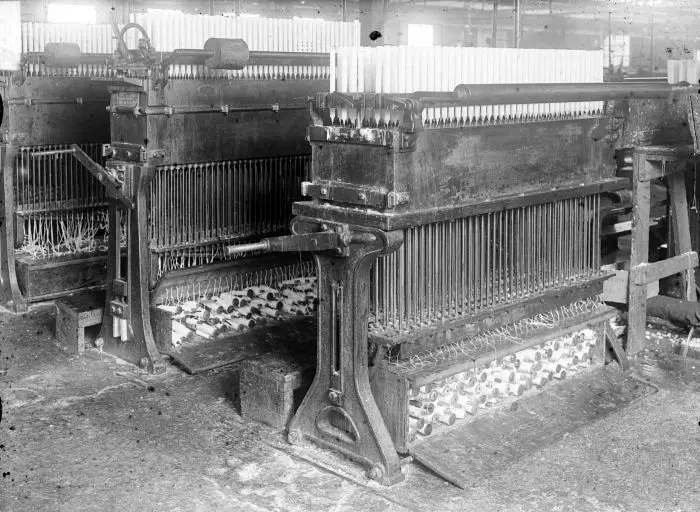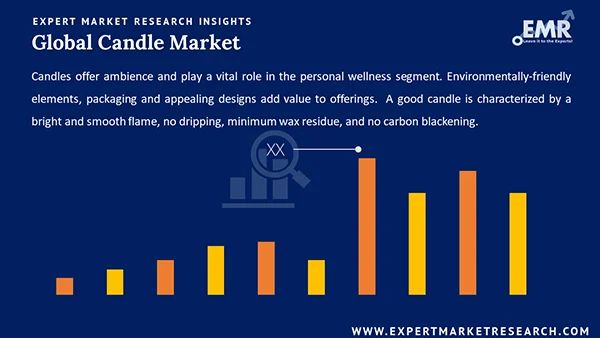Scope Of Candle Making Business In India
Candle making refers to the process of creating candles from wax, wicks, dyes, scents, and other ingredients. India has a long history of candle making, with traditional techniques like hand rolling candles using molds still prevalent today. The candle industry in India has seen significant growth in recent years, driven by rising incomes, demand for home decor items, gifting culture, and the use of candles for religious and spiritual purposes. Key trends include the incorporation of essential oils, luxurious ingredients, innovative shapes and containers, and customized or personalized candles. Major manufacturers, small businesses and home-based candle makers are all active players in the market. The scope of candle making in India covers production, distribution, retailing, imports/exports, raw material supply, manufacturing techniques, major brands, and trends. It is a niche sector within India’s massive consumer goods and lighting industries.
History of Candle Making in India
Candles have been used for illumination in India since ancient times. Some of the earliest references date back to around 500 BCE, where candles were made from the wax of boiling cinnamon. Beeswax was also used traditionally to make candles in India, as noted by Greek historian Megasthenes when he visited India in 300 BCE [1]. Traditional methods involved extracting wax from boiling cinnamon or bee hives, and then repeatedly immersing a wick into the melted wax to form the body of the candle. These labor-intensive methods were used for making candles through the ancient and medieval periods in India. Candles were an important source of light for religious and spiritual ceremonies as well as in homes.

During the colonial period, European methods of candle making started gaining prominence. Paraffin wax began to be used more widely after petroleum deposits were discovered in India in the late 1800s. With industrialization, candle making shifted from handmade methods to more mechanized production using imported raw materials. Despite this, traditional techniques continue to be used, especially for religious and ceremonial candles.
Current Market Size
The candle making industry in India has seen rapid growth in recent years. According to one estimate, the overall market size for candles in India reached around Rs 2,800 crore in 2018-19.[1] The industry is fragmented, with over 5,000 manufacturers spread across the country.[2] However, a large part of the market is concentrated in the states of Tamil Nadu, Kerala, Karnataka, Andhra Pradesh, and Maharashtra. The southern states account for over 60% of the total candle production. The main production clusters are located in and around cities like Chennai, Bangalore, Hyderabad, Mumbai, Delhi NCR, and Kolkata.
Some of the factors driving the growth of the candle market in India include rising disposable incomes, growth in modern retail, increasing uptake of aromatherapy, and growth in hotels/restaurants and spiritual tourism. The increasing use of candles for home décor and gifting purposes has also aided market expansion. Going forward, the Indian candle industry is projected to grow at a CAGR of around 15% from 2019 to 2024.[3]
[1] https://okcredit.in/blog/best-small-scale-industries-in-india/
[2] https://www.quora.com/Is-candle-making-profitable-in-India
[3] Industry sources
Major Players

Some of the leading candle manufacturers in India include Shri Ram Sons Wax Pvt. Ltd, CandlesCube, Prem Oil Company, Global Glory, and Indo International Trading Corporation. These companies produce a wide variety of candles including paraffin, beeswax, soy, and more. Many focus on exports but also have a presence in the domestic Indian market.
Shri Ram Sons Wax is one of the top manufacturers with over 50 years of experience. The company offers a range of products like pillar candles, votives, tea lights, container candles, and floating candles. Their manufacturing capacity is over 15,000 metric tons annually.
Other major companies include CandlesCube and Prem Oil Company which offer customized private label manufacturing to retailers and brands. Global Glory and Indo International Trading Corporation also have significant production capabilities and export worldwide.
Overall, the organized segment of the candle industry in India is still quite fragmented. The top 5-10 manufacturers may account for 30-40% of the total market. Smaller regional players make up the rest of the market. But the major companies are focused on modernizing production and growing their footprint.
Growth Drivers
The candle market in India is experiencing rapid growth due to several key factors. One major driver is the increasing demand for candles, especially scented and luxury candles, among Indian consumers. As incomes rise, more Indians are spending on home décor items like candles to enhance their living spaces.
According to a report by Statista, the candles market in India is projected to grow by 4.81% between 2024-2028, resulting in a market volume of US$377.40 million in 2028 (Statista). Another driver spurring growth is the rapid expansion of e-commerce in India. Online retailers like Amazon and Flipkart are making candles more easily available to consumers across the country. The convenience and discounts offered by e-commerce platforms is boosting candle sales.
Luxury and scented candles, in particular, are becoming popular gifting options during festivals and special occasions. Market research shows that the scented candles segment will see the highest growth rate in the coming years due to rising consumer demand for aromatherapy products (Singh). Overall, the growth drivers of increasing demand, rising incomes, and e-commerce expansion are expected to spur rapid growth in India’s candle market.
Trends
The candle making industry in India has seen some notable trends in recent years. There is a growing demand for innovative and unique candle designs using natural and organic materials. Customers are looking for premium, customized options when it comes to home fragrances.

Many candle makers are focusing on creating novel candle shapes and color combinations to appeal to changing consumer preferences. Some popular examples are geometric candles, two-toned candles, and candles designed in the shape of fruits or desserts.
There is also an increasing shift towards natural and organic ingredients like soy wax, coconut wax, beeswax, and essential oils. Consumers are becoming more aware of the potential toxins in paraffin wax and synthetic fragrances. This has led to demand for clean-burning eco-friendly candles made from sustainable resources.
Customization is another emerging trend, as customers look for signature scents and personalized touches for gifting occasions or special events. Many sellers allow customers to customize everything from the candle vessel to the wax type and fragrance. Engraving and labeling add a special touch. This reflects the growing Indian market for premium and customized home décor.
Challenges
The candle making industry in India faces some key challenges. One major challenge is competition from both domestic and international players. The market has seen an influx of new players in recent years, making competition more intense. Established players need to find ways to differentiate themselves through unique products, branding and marketing [1].
Another challenge is the rising cost of raw materials like wax, fragrance oils, wicks and packaging. The prices of key inputs like soy wax, beeswax, paraffin wax have been increasing steadily. This directly impacts profit margins for manufacturers [2]. Players need to find ways to source materials more cost-effectively or pass on some of the increase to consumers.
Additionally, regulations around product quality, labeling, testing and export/import create challenges. Companies need to ensure compliance with relevant regulations and standards. Lack of clarity around regulations has also hampered growth of the industry [3].
Opportunities
The candle making industry in India offers several lucrative opportunities for growth and expansion:
Exports
India exports candles and other wax products to countries like the US, UK, Australia, Canada, Germany, Netherlands, and France. The export market presents a major opportunity for Indian candle makers to expand their business globally. Catering to international buyers by maintaining quality standards can significantly boost revenues. [1]
Private Labeling
Many retailers and e-commerce platforms are seeking private label candle suppliers. Producing candles for private labels allows businesses to leverage the marketing and distribution channels of major brands. It provides access to a wider customer base without large branding investments. [2]
Expanding Distribution
Increasing presence across organized retail outlets, modern trade stores, specialty stores, and e-commerce platforms can drive growth for candle makers. Tie-ups with large distributors and online marketplaces provide a cost-effective way to improve reach. Overall candle demand in India is increasing, providing room for brands to grow by enhancing distribution. [3]
Future Outlook

The candle making industry in India is projected to see good growth in the coming years. According to Statista, the candles market in India is forecasted to grow by 4.81% between 2024-2028, resulting in a market volume of US$377.40 million by 2028.
The Indian government has also taken initiatives to support small businesses and cottage industries like candle making under its Make in India program. This includes skill training programs, easy access to credit, and marketing support to help small manufacturers grow.
With increasing disposable incomes, demand for home decor products like scented candles is expected to rise. The gifting culture around festivals and special occasions will also drive growth of the candle industry. Overall, the outlook seems positive supported by market trends and government initiatives.
Conclusion
In summary, the scope of the candle making business in India is still evolving but shows huge potential for growth. Some key points that this report highlights are that the market size is approximately $300 million but forecasted to reach $500 million by 2025. Major growth drivers are increasing use of candles for home decor, aromatherapy, and spiritual practices as well as festivals and events. However, some challenges exist around lack of awareness of candle safety and sustainability issues. The industry is still fragmented with many small players but larger companies are entering and consolidating.
Overall, the candle making business has an optimistic future outlook in India, especially with a growing middle class desiring home decor items and gifts. With proper candle testing and eco-friendly practices, companies can tap into this expanding market by emphasizing quality, technology, branding, and distribution networks. The cultural traditions around candle usage for celebrations and rituals also provide a steady demand. By addressing gaps in awareness and sustainability, players in the candle making industry can continue enlightening Indian homes and businesses for years to come.






